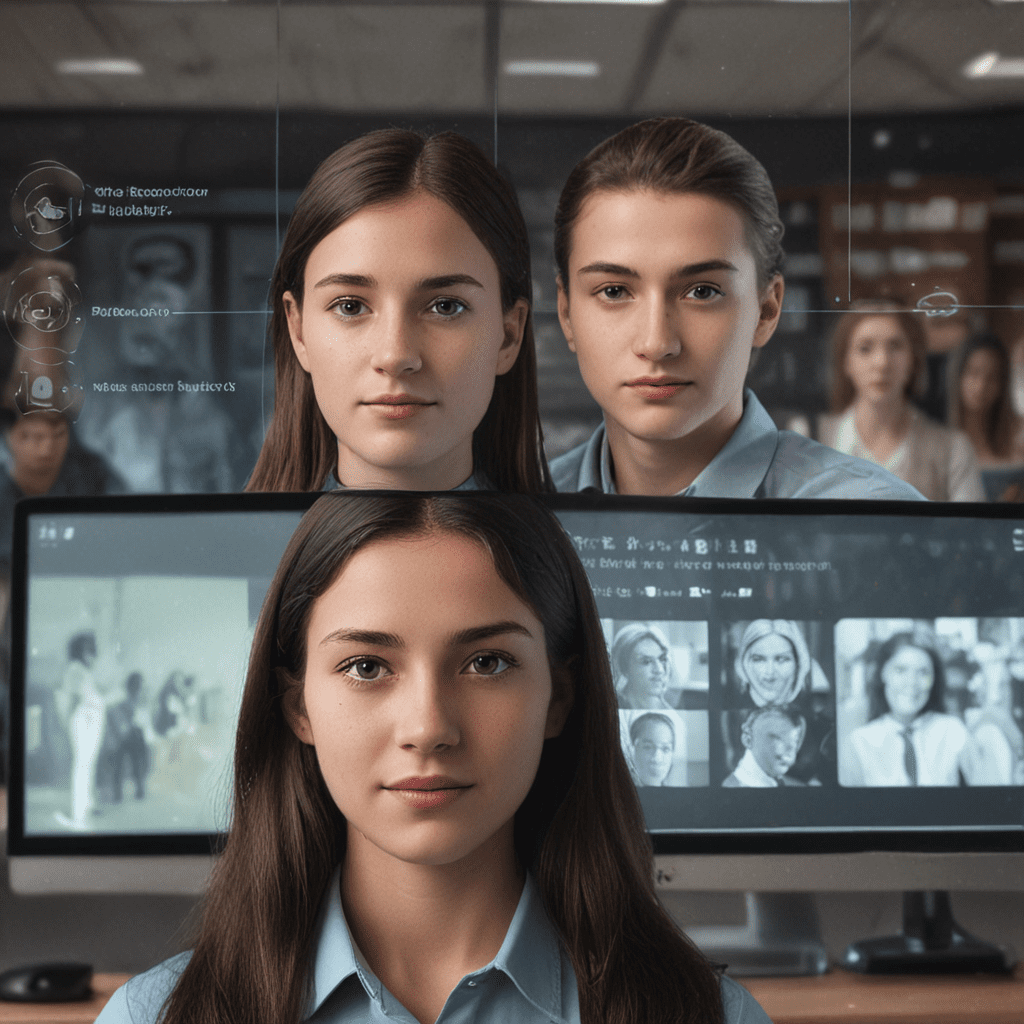Facial Recognition in Gaming: Enhancing Player Engagement
Introduction
Facial recognition technology has emerged as a powerful tool in various industries, including the gaming sector. By integrating facial recognition into games, developers can unlock new possibilities to enhance player engagement and create immersive experiences. This article explores the history, benefits, and future trends of facial recognition in gaming.
The History and Evolution of Facial Recognition in Gaming
The roots of facial recognition in gaming can be traced back to the early days of computer vision. In the 1990s, researchers began developing algorithms that could identify human faces in images and videos. These algorithms were initially limited in their accuracy but gradually improved over time.
In the early 2000s, facial recognition technology began to be incorporated into games. One of the first notable examples was the game "The Sims 2," which allowed players to create characters with unique facial features. Since then, facial recognition has become increasingly common in games, as developers have discovered its potential to enhance player engagement.
Benefits of Integrating Facial Recognition into Gaming
Integrating facial recognition into games offers numerous benefits, including:
Immersive and Personalized Experiences
Facial recognition enables games to create more immersive and personalized experiences by allowing players to use their own faces as avatars. This can enhance the sense of realism and player ownership within the game, leading to increased engagement.
Improved Character Control and Animation
Facial recognition can also improve character control and animation by capturing the player's facial expressions and translating them into in-game actions. This allows for more natural and realistic character movements, enhancing the overall gameplay experience.
Facilitating Social Interaction and Collaboration
In multiplayer games, facial recognition can facilitate social interaction and collaboration by allowing players to see each other's faces during gameplay. This can help to create a sense of community and shared experience, which can increase player engagement and retention.
IV. Challenges Associated with Facial Recognition
A. Privacy Concerns
Facial recognition raises privacy concerns as it involves collecting and storing sensitive biometric data. Developers must implement robust data protection measures to prevent unauthorized access and misuse of personal information.
B. Technical Limitations and Accuracy
Facial recognition algorithms are not perfect and can be affected by factors such as lighting conditions, facial expressions, and occlusions. Ensuring high accuracy and reliability is crucial for a seamless gaming experience.
V. Ethical Considerations
A. Informed Consent
Ethical guidelines mandate that players provide informed consent before their facial data is collected and processed. Developers must clearly disclose the purpose and usage of facial recognition within the game.
B. Data Protection and Storage
Protecting collected facial data is paramount. Developers must comply with data protection regulations and implement secure storage mechanisms to safeguard player privacy.
VI. Future Applications and Trends
A. Enhancing AI-Driven Characters
Facial recognition will play a pivotal role in enhancing AI-driven characters in games. By analyzing facial expressions, games can create more emotionally responsive and interactive NPCs and avatars.
B. Creating Realistic NPCs and Avatars
Facial recognition will enable the creation of highly realistic NPCs and avatars with lifelike expressions and animations, further immersing players in the gaming environment.
VII. Case Studies of Successful Implementations
A. Example Game 1
Game X successfully integrated facial recognition to allow players to create avatars that mimic their own facial expressions, enhancing character control and immersion.
B. Example Game 2
Game Y utilized facial recognition to facilitate multiplayer collaboration by enabling players to see each other's faces during gameplay, fostering a sense of community and shared experience.
VIII. User Experience and Feedback
Player feedback is essential to refine facial recognition integration in games. Developers should gather feedback to understand how the technology impacts immersion, engagement, and overall gaming experience.
IX. The Future of Facial Recognition in Gaming
Facial recognition is poised to revolutionize gaming experiences by offering enhanced immersion, personalized gameplay, and improved social interactions. Future advancements will focus on improving accuracy, reducing privacy concerns, and exploring new applications that leverage facial analysis.
X. Conclusion
Facial recognition in gaming presents numerous opportunities to enhance player engagement and create more immersive experiences. While challenges and ethical considerations exist, responsible implementation and continued innovation will shape the future of facial recognition in gaming, unlocking new possibilities for developers and players alike.
Frequently Asked Questions
Q: Is facial recognition in gaming secure?
A: The security of facial recognition in gaming depends on the implementation. Developers must prioritize data protection and comply with regulations to ensure player privacy.
Q: How does facial recognition enhance gameplay?
A: Facial recognition can enhance gameplay by providing personalized experiences, improving character control, and facilitating social interactions.
Q: What are the ethical implications of facial recognition in gaming?
A: Developers must obtain informed consent from players and implement robust data protection measures to safeguard privacy.

